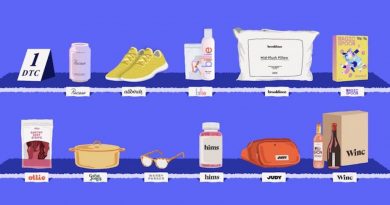How multichannel marketing drives success during peak traffic times
Websites, like cars in rush hour, often experience periods of high traffic throughout the year. This increase in site visitors leads to greater brand awareness, but companies without a multichannel plan of action will miss out on conversion opportunities.
In high-traffic times, successful marketing teams collect customer data compliantly and offer connected commerce experiences. That means moving away from point solutions, as they may struggle to work together well, slow down marketing teams and limit multichannel marketing.
Multichannel personalization helps marketers capitalize on the high traffic experienced during these peak seasons. It’s a set of strategies that connects customers with brands, identifies their needs, and delivers relevant content.
The number of avenues in the multichannel ecosystem is growing as customer behaviors change and technologies continue to evolve. In response, marketers are focusing more on the channels with which their audiences engage and deliver the solutions they seek through targeted personalization efforts.
Teams are leveraging automation for personalized email marketing
Many successful marketing teams employ personalized email campaigns to connect with and convert customers. Activating buyer-focused campaigns via email — including highly targeted deals, promo codes and product recommendations — helps target customer segments and increase revenue.
In addition, integrating email marketing into marketing automation directly affects lead generation, brand awareness and how engaged customers are with brands between purchases. For peak traffic times, an email service provider (ESP) fueled by customer data — collected by a customer data platform (CDP) — makes email marketing more efficient and relevant for customers.
Personalized email marketing campaigns allow brands to connect with audiences outside their online properties, using behavioral data to provide content and solutions that meet individual needs. One popular tactic marketers use is the abandoned cart email: automated notifications brands send to customers who left their websites without purchasing the items left in their shopping carts. During peak seasons, marketing teams often add bonuses such as guaranteed delivery before specific dates or limited-time discount codes to capture these leads.
Other email campaigns send automated welcome emails during high-volume periods to facilitate engagement. When customers take actions that signal interest (account sign-ups, list subscriptions, etc.), they’ll receive a welcome message that conveys the brand’s value.
Targeted SMS campaigns are driving customers back to online properties
Using SMS channels to send messages — personalized with zero- and first-party data — helps brands drive mobile marketing revenue. Tailoring promotions and notifications with customer-specific content on these channels boosts engagement and customer retention.
High-performing SMS campaigns embrace a digital commerce marketing strategy that connects them with what customers see in other channels. Campaigns without specific targeted segments fail to engage customers and lead to increased opt-outs.
Multichannel marketers take advantage of peak seasons to grow SMS campaign opt-ins, all the while adhering to consent management standards. This builds customer trust, ensuring subscriber levels stay high once those seasons end.
Many brands send automated coupons through SMS to keep these customers engaged throughout the year, providing discounts and directing them back to their online properties. Successful SMS campaigns also send free delivery offers to encourage additional purchases.
The roles of retargeting and lookalike audience strategies
Tactics such as retargeting and lookalike audience creation allow marketers to get the most out of ad spend. These strategies help brands personalize ad content based on a consumer’s previous browsing behavior, which helps brands optimize advertising budgets and outcomes.
Marketers often use API tools to send important events, such as purchases or leads, to their ad accounts, allowing for better optimization and control of their ad campaigns. Additionally, many brands use predictive analytics to forecast high-value shoppers, leveraging collected customer data and AI-driven analytics to identify customers with the highest conversion potential.
Multichannel marketers target a more specific audience by using lookalike audiences — segments based on individuals with high customer lifetime value or who recently made purchases. They collect customer data and automatically push it into Facebook, Google and other online platforms, acquiring high-value prospects faster and more reliably.
Multichannel marketing sets brands up for success
Instead of relying on the influx of traffic during those peak traffic periods, the most successful multichannel marketing teams engage with audiences across a wide range of channels all year. These brands collect data and analyze interactions to learn what content they respond to and how to meet their needs.
When the peak traffic season rolls around, successful multichannel marketers are prepared — they lean on the customer relationships they’ve built and thrive at offering connected experiences.
Sponsored By: Bloomreach

